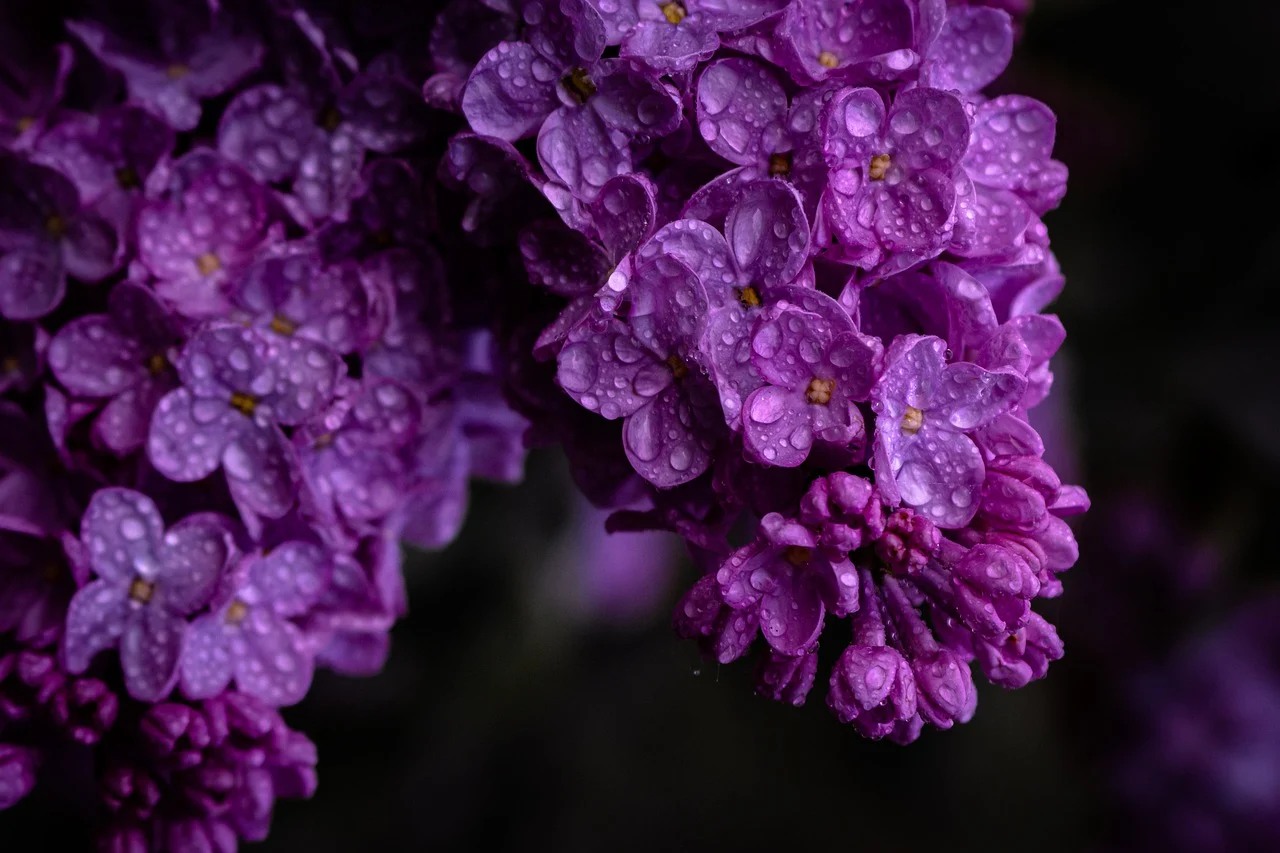
Fridays at Keller: Reflecting with Miriam Songster’s “Bloom Dates”
By David Strunk
Sign up for our monthly newsletter!
I
n a small storefront on Henry Street, jammed between Catherine and Market in the Lower East Side is the Olfactory Art Keller – an exciting gallery promoting New York City’s contemporary scent artists. This past May, the gallery’s Project Room hosted Miriam Songster’s “Bloom Dates,” a solo exhibition showcasing the strong yet gentle floral aroma of freshly cut lilacs from Miriam’s Garden in upstate Pound Ridge and neighboring Westchester. Displayed in glass vases etched by the artist, the lilacs were on display until they dried up. World Sensorium Plantings was lucky enough to experience the project and attend a talkback before the show wrapped.
Originally, Miriam’s “Bloom Dates” was to be a part of a larger group exhibition. However, thanks to the guidance and foresight of gallery director Andreas Keller the lilacs received their own show. Instead of just one bouquet on a gallery wall fighting for aromatic space amongst other olfactory art, Miriam’s lilacs filled the aforementioned Project Room, a tiny five-by-six space with a low-hanging ceiling that would feel small to anyone. To put it plainly the room is disorienting. Not to say the litter of lilacs is perplexing, no, but entering the space causes one to completely focus on their sense of smell – one not traditionally noted in the upper hierarchy of the senses. The smell of the purple flowers metaphorically or rather actually hit you in the face – causing you to lose any bearing. The experience was so immersive that while physically in the Project Room, it is safe to say that the rest of you were anywhere that’s not.
Throughout its multiple-week runtime, the scent of the lilacs changed daily as bouquets wilted, were changed, and then wilted again. A person could come to Keller numerous times and experience a new fragrance unlocking a selection of various and competing memories, including ones that visitors had forgotten they ever had, and at times, unlocking old ones they had forgotten.
For Miriam, it’s the beginning of the bloom season, which lasts a couple of weeks, that’s emotionally strongest, reminding her of her childhood home, and the purple lilacs her mother used to plant. The specific lilac aldehydes and alcohols, that attract hummingbirds and butterflies, transport her to a place of nostalgia that no longer exists physically.
Before the talkback, many patrons shared their experiences and stories. Like Miriam, many felt the strongest connection at the beginning of the exhibition when the smell was most reminiscent of the chemistry of springtime. This scent awakened many unexpected emotions, and guests shared stories, many moved to tears.
By the time World Sensorium Plantings visited the Project Room, the lilacs had dried, but their scent remained strong.
Experiencing the dying lilacs was like reading entries of a messy paged smell diary. The lilacs, blooming and dying, bring an appreciation of the quality of temporalness, grounding one to the nature one has not only observed in the exhibition but is part of. There is beauty in death, especially when remembering that the lilacs are a cycle. That come this time next year they’ll be back. Maybe a little earlier. Maybe a little later, but the piercing floral tenderness of lilacs will be back next year for someone new to experience for the first time and others to reconnect with.
After experiencing Miriam’s work there’s a period of haziness and reflection sitting in your folding chair waiting to hear her describe her homegrown lilacs. An aura of intrigue and curiosity filled the room as people with bags full of various postgraduate degrees went back and forth discussing their observations of the lilacs and questioning what those observations could even mean dropping quotes from theoretical physicist Werner Heisenberg, known for his uncertainty principle, such as “What we observe is not nature itself, but nature exposed to our method of questioning.”
Miriam Songster states to have a very practical approach to “Bloom Dates.” There was a call from the gallery and she answered. She loved the smell of lilacs in her own backyard and appreciated the strong connection she shared with them. When cultivating her flowers, she did various research on the imagery, symbolism, and display of lilacs, but none of these had a great impact on her work. It wasn’t until Miriam saw a map depicting climate change and its relationship with the lilac blooming stage that her challenge began to take shape.
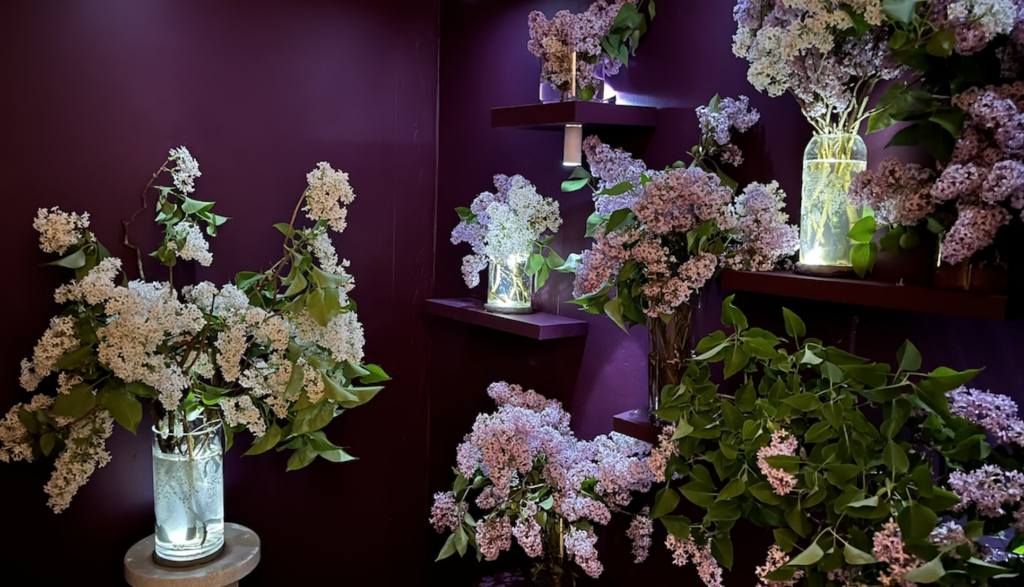
Since the 1950s lilac bloom dates have been shifting across the United States. As reported by the EPA, premature phenological events, such as lilacs blooming too early, are a direct result of climate change. Lilac’s being visible to us sooner doesn’t necessarily seem like a bad thing, in fact to many it would be welcomed, but it sets off a pretty crazy chain reaction. If plants bloom too early, they won’t be pollinated, preventing seed growth. If insects arrive too late to feed, they won’t survive. This endangers mice, and in turn, their predators like snakes and hawks will also face hunger. In short, the whole ecosystem goes out of wack.
So Miriam took this information and ran with it. Further research led her to the organization Budburst, a group that encourages conservation work and allows individuals to help keep a record of the plants we hold so dear to us. She began to keep track of her lilacs and submitted bloom dates data and other postings to Budbirst promoting climate change awareness, but still, Miriam wouldn’t necessarily refer to herself as a conservationist, first, or say that her work was instilling the fight against climate change. She would just say that she was being practical.
But practicality, by definition, involves action, which is conservation. It was the practical choice for Keller to decide Miriam’s piece was a solo exhibition just as it was practical to display the lilacs in a dark and damp space to help maintain their freshness. Miriam needed vessels to place these lilacs in so she laser-etched the changing bloom dates onto glass vases to put her purple pretties in because it was the practical and effective way to display them – and also reinforced the climate change message.
Miriam Songster and her collection of lilacs illustrate the importance of our own decisions in the fight against climate change, reminding us that what’s most practical is what is most beneficial for our earth and our fellow man.
David Strunk is a dramatic writer based out of New York City by way of the Deep South. He works with World Sensorium Conservancy as a contributing editor and producer for WS/C Kids. You can reach him here.
Plantings
Issue 37 – July 2024
Also in this issue:
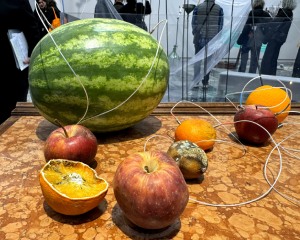
Yuko Mohri: Transforming Plant Fruit Decay into Melody and Meaning
By Gayil Nalls
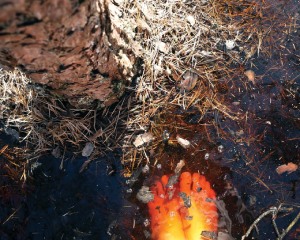
Irina Adam’s “Pitch Pine Pollen,” A Transforming Forest
By David Strunk
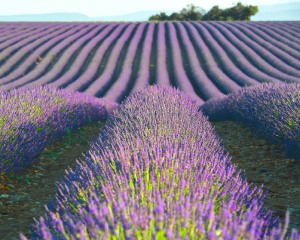
Fields of Color, Culture, and Calm
By Gayil Nalls
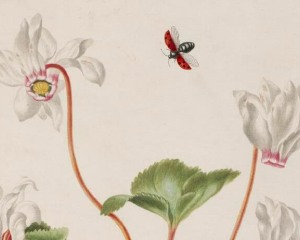
A 19th-century tale of hermaphrodite flowers, Charles Darwin, and women’s right to vote
By Rebecca Batley

Ecologists Can’t Beat Invasive Species, So They’re Joining Them
By Lorraine Boissoneault
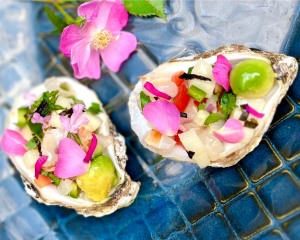
Eat More Plants Recipes:
Lychee Ceviche with Rose Petals
By Culinarian Mary Munro

As Ireland transitions from the rich, smoky scent of peat-burning to a more sustainable future, its olfactory heritage is evolving. What will become the next iconic aromatic symbol of Ireland?
Click to watch the documentary trailer.

